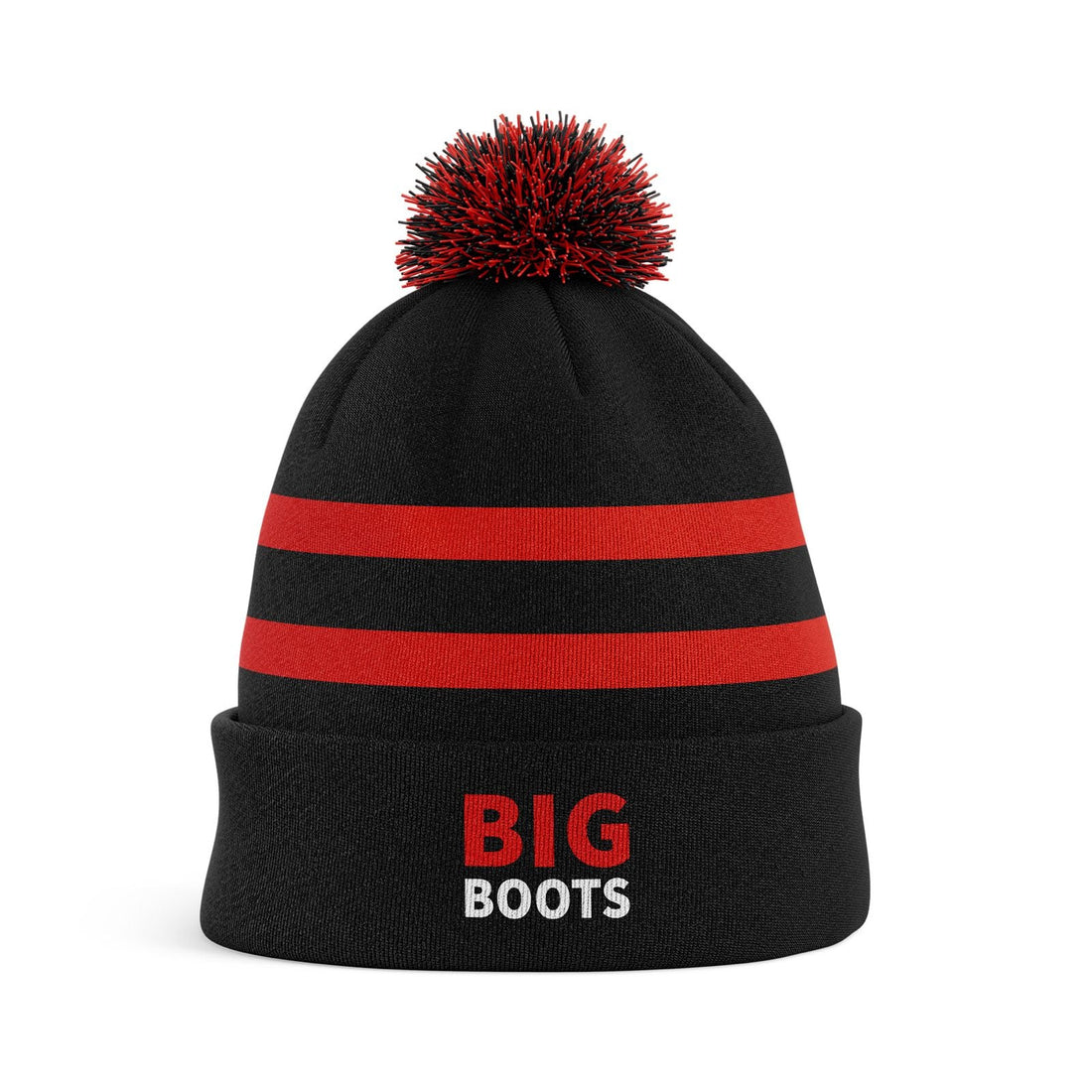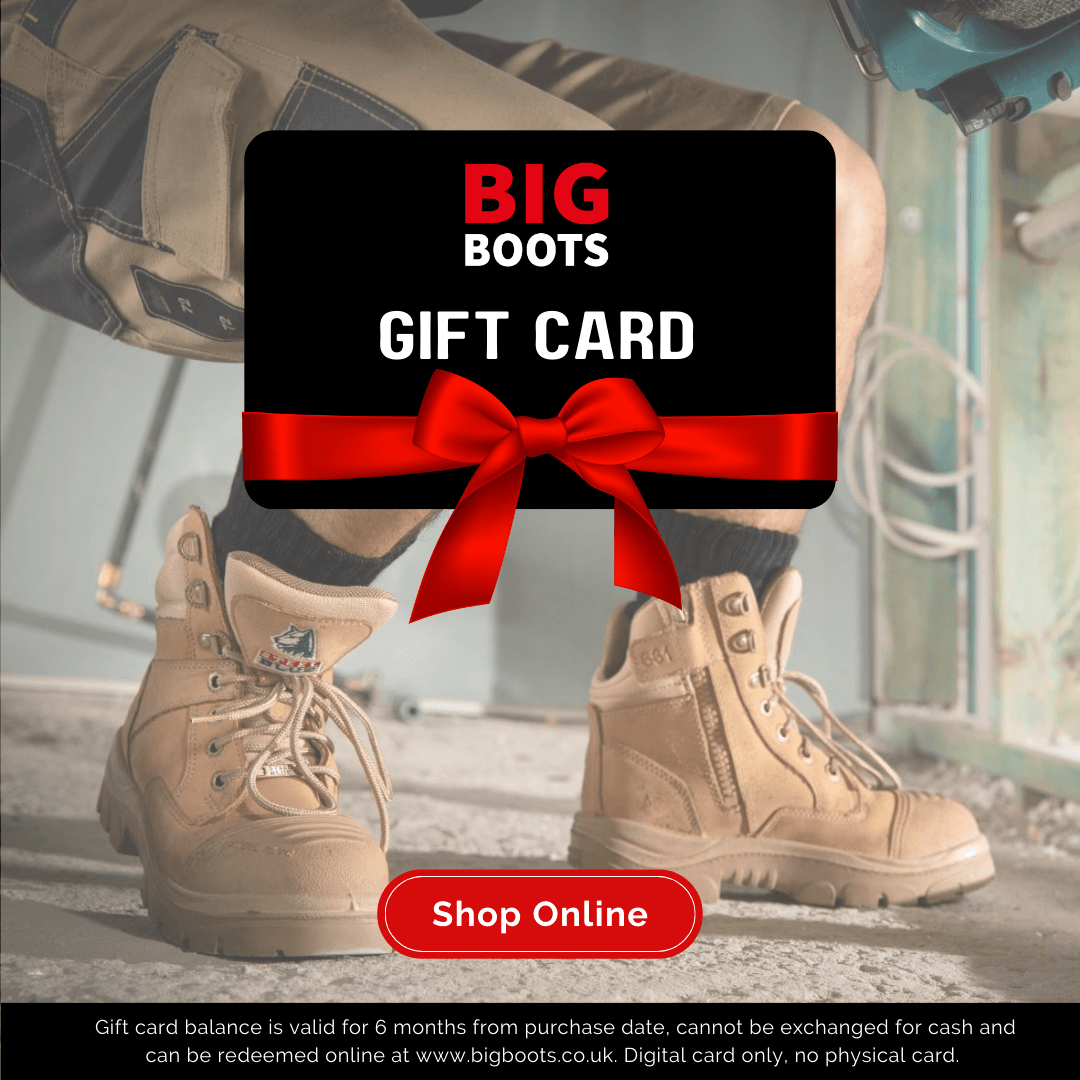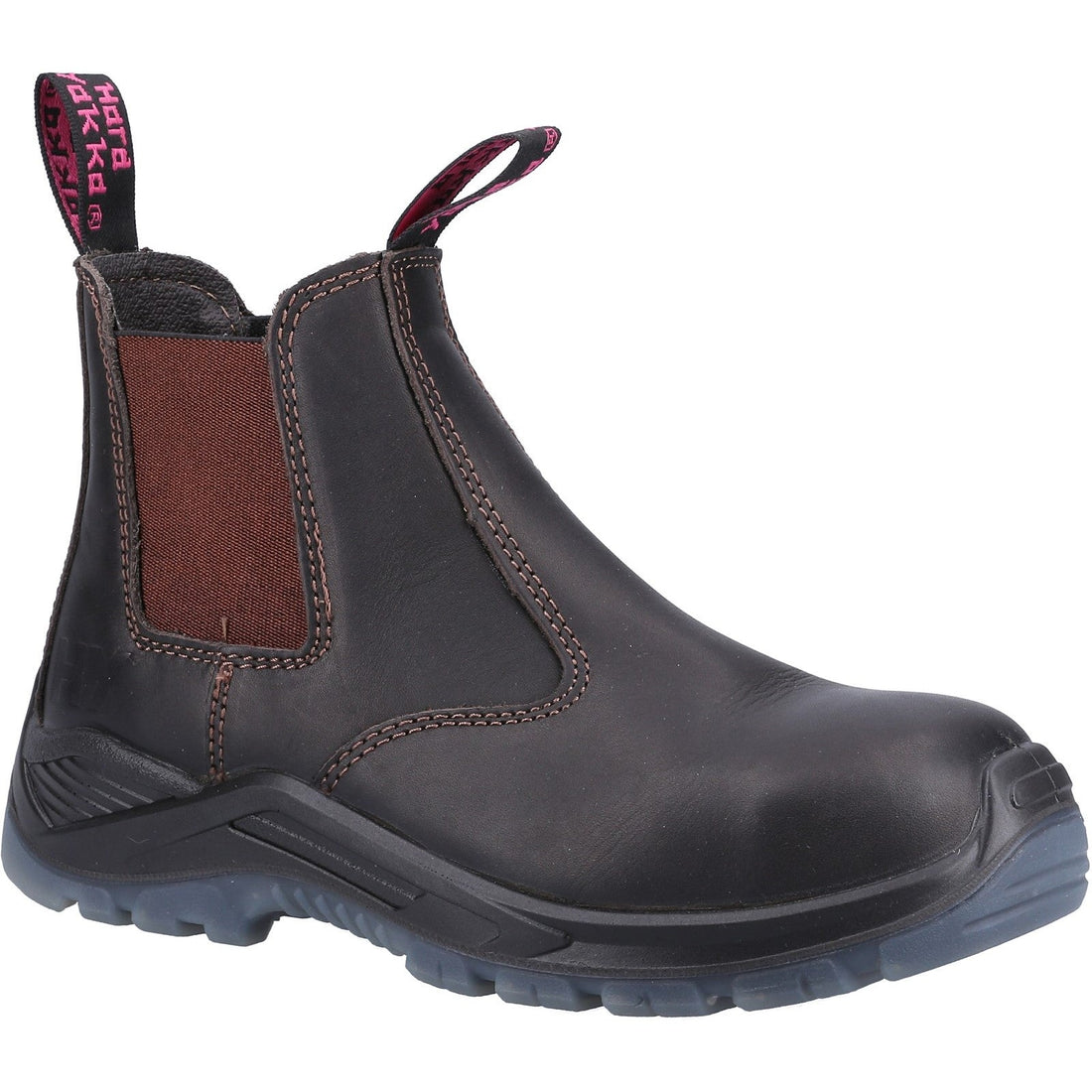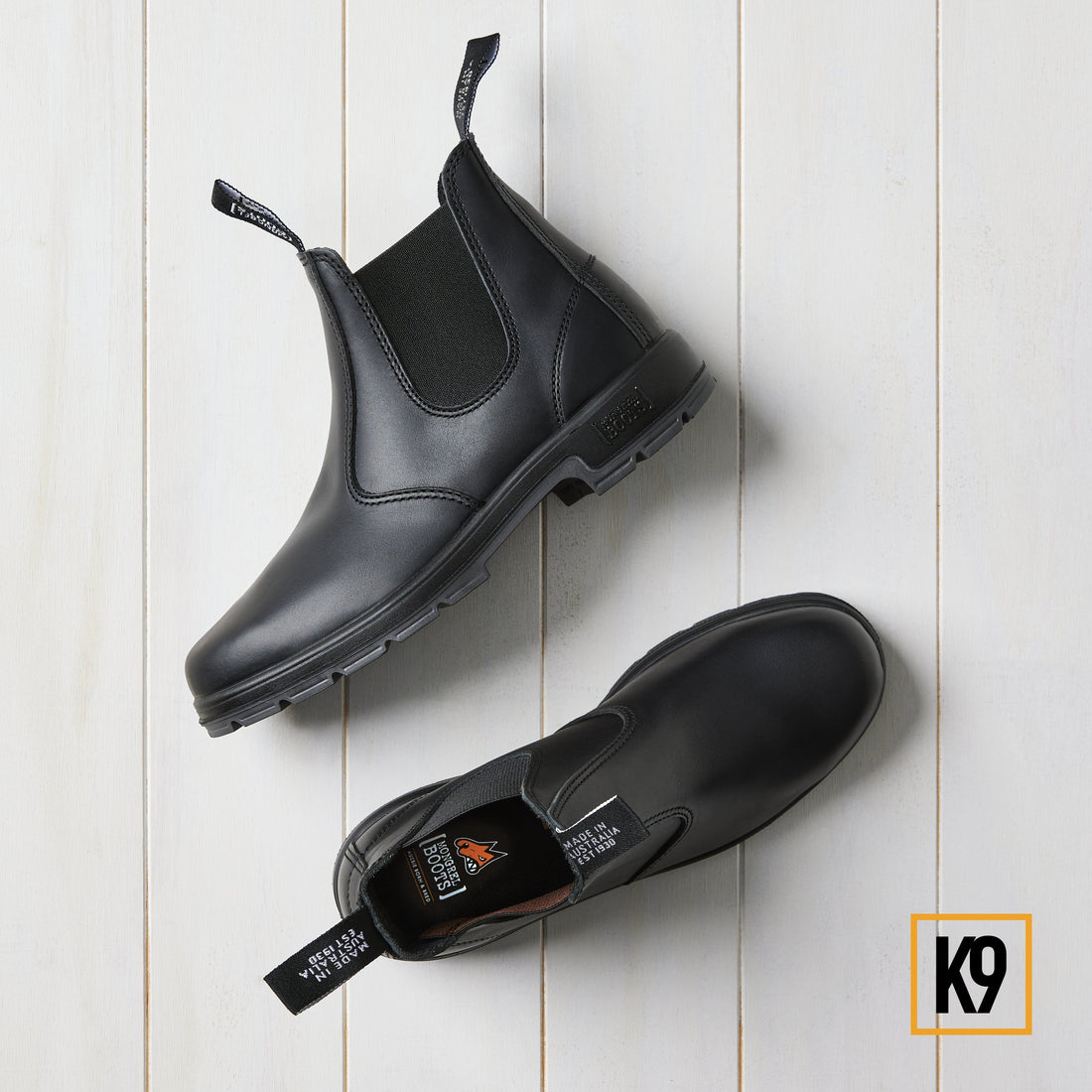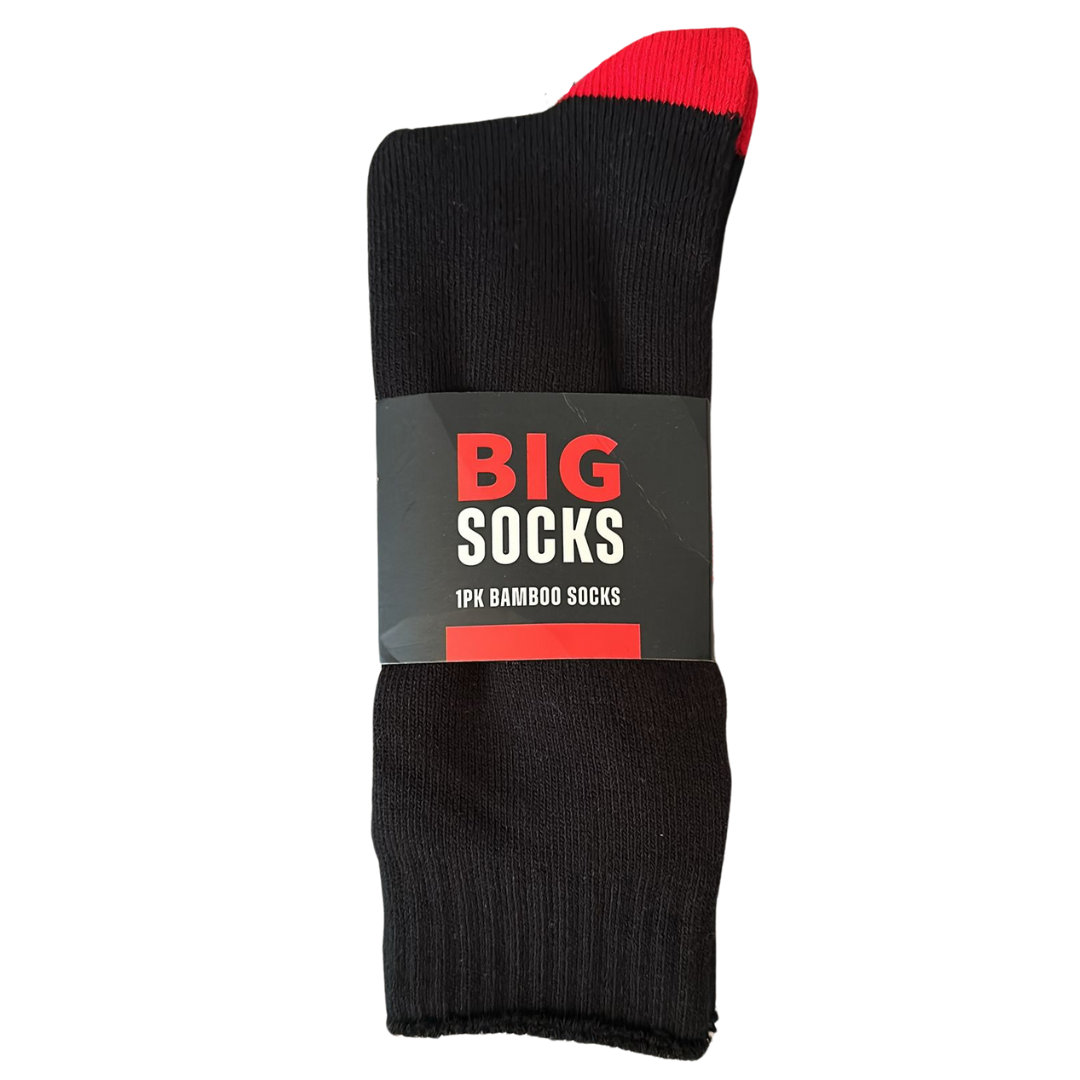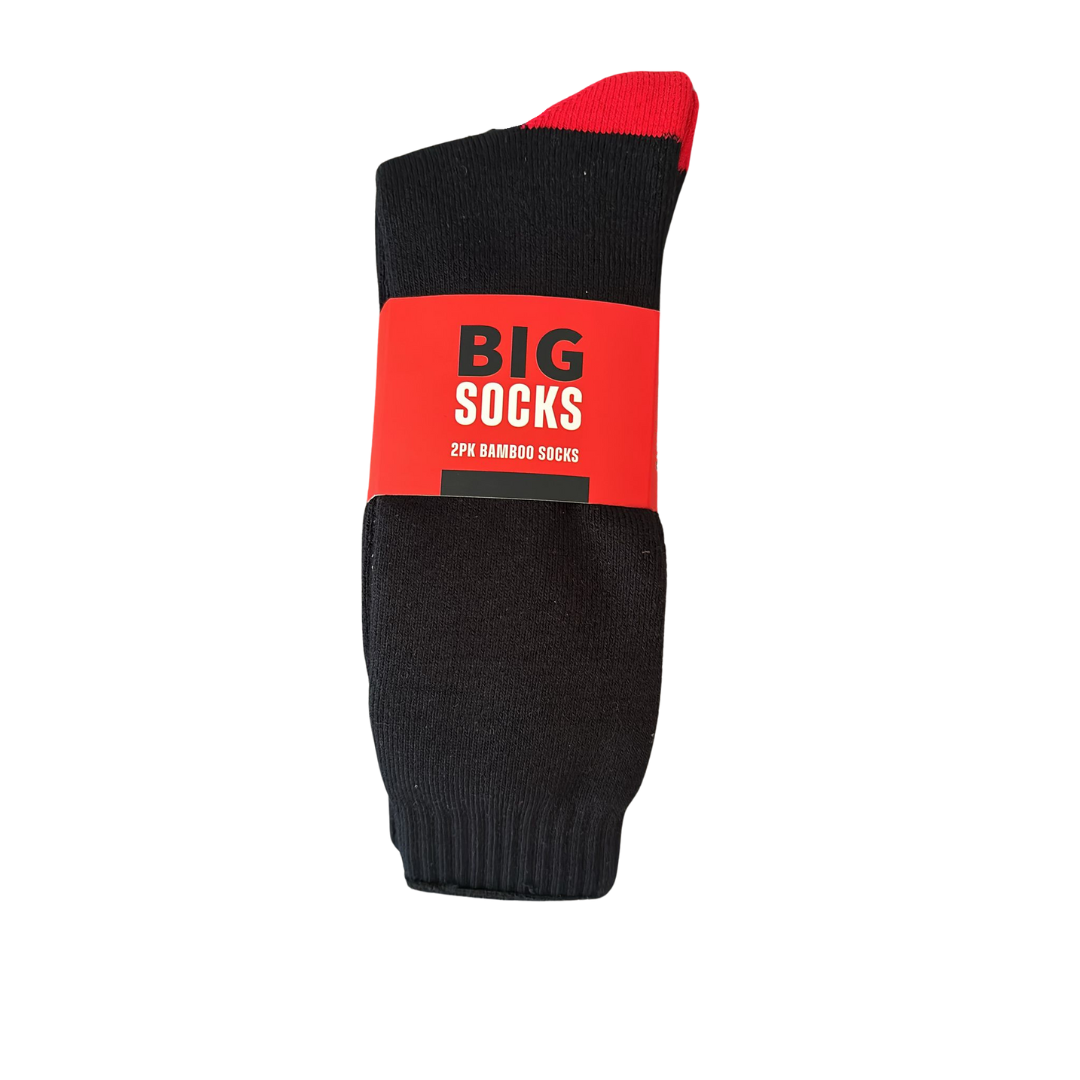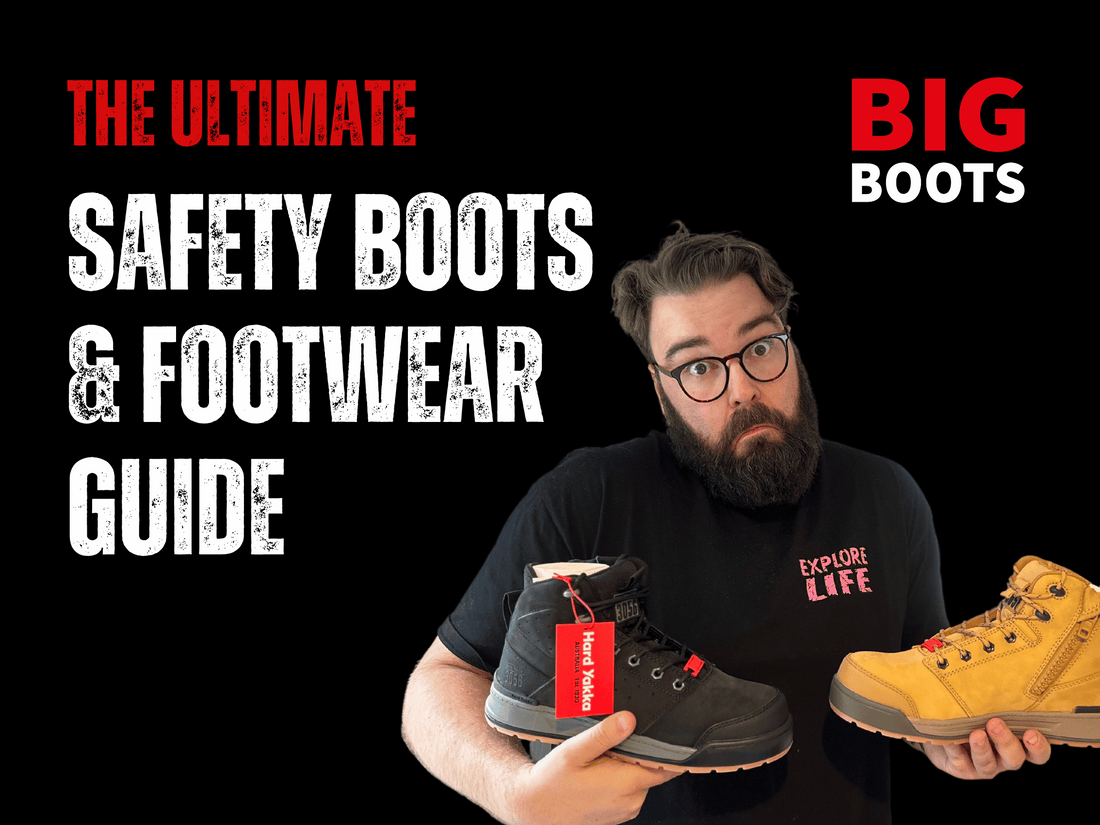
Safety Boots & Footwear Buying Guide
Safety boots and footwear can make all the difference at work. From simply ensuring you are kept comfortable during a full day of working on your feet, to the more complex task of protecting from hazards and accidents in the workplace, quality safety footwear keep you working at your best.
Legal guidelines and requirements such as The Personal Protective Equipment at Work Regulations 1992 (updated 2022), mandate "the provision of appropriate safety footwear where there is a risk of injury", meaning different workers must find the right safety boot for their work environment - with many employers providing an allowance or amount staff can put towards the perfect pair.
Through this guide we will give you all the information you will need to buy the perfect pair of safety work boots for you. From breaking down category types to showing which boots suit which professions best, we will give you all the information you need to navigate the world of safety footwear!
What is Safety Footwear?
Safety footwear are boots, shoes and trainers with inbuilt designs that function to protect the feet from accident, injury and discomfort. Whilst employers are required to ensure that workplaces are kept as safe from hazards as possible, accidents can still happen... meaning that foot protection in manual professions is very important. Legislation has dictated the levels of protection required in footwear for certain work sites and so you should be given information from your employer as to what grade of footwear to invest in (including whether laces are required, or slip on dealer boots are just fine)!
Many workplaces are full of hazards that can be avoided through appropriate footwear. Slippery surfaces due to water, oil or slick materials like mud can lead to slips and falls. Heavy materials and machinery have the potential to fall and crush feet and toes. Sharp objects can be stood on, penetrating through your boots into your feet and causing major injuries. Ouch! By finding the proper protective gear for your workplace, you can avoid these foot-related injuries and get on with your job worry-free!
What Do the Safety Footwear Ratings Mean?
When shopping for safety footwear, you will notice a short hand two-letter code, beginning with the letter "S" that represents the protection that they provide. Here is a breakdown of what the letters and numbers you might see listed attached to our work boots mean:
- SB (Safety Basic): This is the minimum safety standard, offering toe protection against impacts up to 200 joules.
- S1: In addition to basic toe protection, S1-rated boots provide anti-static properties, resistance to fuel oil, and energy absorption in the heel for added comfort.
- S2: These boots offer all the features of S1 but with added water resistance.
- S3: Along with the benefits of S2, S3-rated boots include midsole penetration resistance to guard against sharp objects. Our Steel Blue range are all S3 rated.
- S4: These boots offer the same protection as S1 but are made with a moulded polymer or rubber upper, such as Wellington boots, making them completely waterproof.
- S5: S5-rated footwear provides the same waterproof protection as S4, with the added benefit of midsole penetration resistance for extra safety.
What are the types of Safety Footwear?
Now that we know the categories and levels of safety that different footwear can fall into, let's explore the different types of safety features that you can find in work boots! No two pairs of safety boots are the same, and understanding what the most common hazards in your workplace are will help you find the pair best suited to your role.
Slip Resistant Boots
Slip Resistant properties of Safety Boots can be some of the most important for safety at work. The least you can expect from your work boots is to keep you on your feet!
Slip resistant safety boots feature deep ridges in their treads, much like an offroad bike tyre! Even when they are covered in mud and other debris they can still provide grip.
If you work in outdoor sites, sites that deal with organic matter and foodstuffs or if you work in wet environments, then slip resistance should be a key property to look out for in your work boots.
Steel Toe Cap Boots
Falling and rolling debris and machinery are some of the most common and harmful hazards on work sites. Having adequate protection within your work boots can help guard your toes and feet from crush injuries. Steel toe caps are one of the most common and effective features in work boots, creating a hard shell within the boot’s structure.
Steel toe cap boots and shoes should be your go to when looking for footwear that will protect you on building sites or when working with heavy machinery. Whether you work in the construction industry or are embarking on your own DIY home renovation project, protecting your feet through safety footwear is incredibly important.
Anti Static Boots
Static energy can build up from the rubbing of the soles of shoes against flooring. In most workplaces and environments, this is a perfectly safe and normal occurrence, however in spaces where there is sensitive electronic equipment or a high risk of fires caused by sparks, static build up must be avoided at all costs.
Professions such as electronics, mechanics and those who work with musical equipment may need these shoes. Anti-Static safety boots prevent the build up of static through the specialist materials they are constructed from.
Composite Toe Boots
Whilst the most common toe protection found in work boots comes in the form of steel toe caps, composite toe work boots can also be highly effective. Rather than using metal as the protective shield for toes in a boot, these shoes use hardened plastics and materials such as kevlar to form a barrier from crushing objects. In many instances, the protection level is comparable to that of steel toe boots and the footwear that uses them is lighter and can be easier to wear in.
For those who work in airports who have to pass through metal detectors regularly, these shoes can be very useful! Equally, by omitting metal from their design, these safety boots are more lightweight, and can be worn all year round without causing the feet to overheat.
Composite toe caps do not conduct heat or electricity, making them ideal for specific environments, such as electrical work. However, the protection level is not always equivalent to steel; while composite toes can pass standard impact and compression tests, they may not be as resistant to punctures or extreme weight.
Heavy Duty Boots
Heavy duty safety boots offer the highest levels of protections and safety by combining all of these design elements together. With penetration plates in the soles, these boots can not only withstand crushing but also stepping on sharp objects, protecting the feet from a wide range of injuries. They tend to also withstand high heat levels, such as the range of Munka Work Boots which can withstand temperatures of 300°C.
Selecting the Right Safety Footwear for Your Workplace
Each workplace and each job will expose your feet to different hazards. Check through our list of professions to see which spec of safety boot is best for your line of work:
Mechanic
As a mechanic you will be working with large rolling machinery, with the potential to crush your feet if unsecured, as well as a range of oils and corrosive fluids. Mechanic Work Boots should therefore have adequate crush protection through toe caps as well as suitable outer protection from spills.
For a full breakdown of our favourite workwear pieces for mechanics, check our mechanics workwear guide.
Warehouse
Working in a warehouse can expose you to heavy materials and machinery such as forklifts, requiring protecting toe capped safety boots. Warehouse Safety Work Boots should also be able to insulate against the cold conditions that can be experienced in warehouses too.
If you are a warehouse worker, check out our comprehensive warehouse workwear guide to find all the kit you will need for safety and comfort on the job.
Electrician
As an Electrician, you may be dealing with heavy or sharp objects meaning a protective hard wearing outer lining is important. The most important design element for electricians Safety Work Boots is that they provide anti-static and non conductive elements for protection from shocks.
To find our suggestions for a full workwear outfit, look to our full electricians workwear guide.
Construction
Construction workers contend with dangerous machinery as well as heavy materials. Construction Safety Work Boots should protect from crush and penetration injuries through toe caps and penetration plates, as well as supporting the ankles to prevent injury.
If you are looking for a complete construction workwear outfit, check out our complete construction workwear guide.
Plumber
As a plumber, you will be no stranger to water spills, and so Plumber Safety Boots ought to have sufficient grip and slip proof elements in their treads to protect you from injury. Working with sharp broken pipes or heavy objects can also be a hazard so your boots should also be crush and penetration proof.
For a full list of work kit we suggest for your profession, look to our plumber workwear guide.
Builder
On a building site you can expect difficult terrains, heavy machinery and materials. Builder safety work boots should therefore protect from crush injuries as well as having a significant tread to prevent slips and falls.
To discover more suggestions for workwear on site, check out our full builders workwear guide.
Trucker
Working as a trucker will see you spend most of your time behind the wheel, meaning that your work boots need to be comfortable and sensitive enough to be good to drive in. Trucker Safety Work Boots need to also be crush resistant and protect against the elements as you load and unload deliverables into your truck.
How Should Safety Boots Fit?
In general, you should choose a safety boot size that is the same as your other regular shoes. Unless otherwise stated by a retailer, most safety footwear sizing matches regular sizing standards. Generally, a comfortable but snug fit is recommended, as excessive room in the toe box can lead to discomfort when walking long distances. However whilst premium Nubuck leather will mould to your feet, steel toe boxes won't... so when trying on safety boots, try to ensure there is a little space between the end of your toes and the boot.
The boot should fit snugly around your ankle so as to properly protect that area. Be aware of any areas that may rub the foot, toe caps and other middle plating can be a culprit of discomfort for some feet.
Women who require work boots should try and find specially designed women’s safety footwear. In general women’s feet have a slightly different shape to men and so choosing more specified footwear will not only ensure you find the right sized boot, but will likely mean that they fit you even better.
Fastenings on safety boots can have a big impact on their fit. Slip on boots, such as the quality range from Mongrel Boots, can offer an easier to wear in fit as well as being simple to take on and off.
At BIG Boots UK we understand the importance of the perfect fit when choosing safety boots, that is why we offer free exchanges to a different size if you discover your boots do not fit properly.
Key Considerations when buying a Safety Boot
When choosing the right safety boots for you, keep the following things in mind:
Material
Different materials will produce different comfort and protection benefits in safety footwear. If you are seeking breathability, opting for a canvas outer layer could be a good option. Linings that have moisture wicking properties, such as the soft lining found in Steel Blue Work Boots can be good for those who are concerned about sweating in their work boots.
If you require higher levels of waterproofing, opting for materials such as leather can keep your feet dry and comfortable in wet weather. However it's a good idea to have 2 pairs of boots on the go over a wet winter - giving one pair a chance to dry naturally (away from a heater to avoid cracking), whilst you head to work in the second.
Environment
The environment in which you will be working will be a major factor in deciding how protective you need your safety boots to be.
During warmer weather, many of the protective qualities of safety boots can become nuisances, leading to overheating sweaty feet. Investing in a separate pair of shoes better suited to warmer weather could be a good option for those who notice discomfort in hot weather. Our guide to buying summer safety boots is a great go-to for finding a more lightweight and breathable pair.
Size
Safety boots are likely to be worn for a very long time and for long periods at a time. Making sure you invest in a pair that fits you to a T is a basic requirement, but will guarantee your comfort. Make sure you keep in mind the type of socks you plan to wear with your boots. Thick work socks can be a good option for comfort and longevity, but will require a roomier fit.
For suggestions on the perfect socks to pair with safety work boots, check out our collection of work wear accessories.
What to Avoid when Deciding on Safety Footwear
Avoid poorly fitting shoes, shop around for the brand that best suits your foot shape and for women, look for shoes that are designed for women’s feet as they tend to fit better using ladies sizing.
Avoid over-specced shoes. Try and identify what is needed for your profession and definitely take a look at reviews.
Why Choose BIG Boots UK for Safety Footwear?
At BIG Boots we believe if you buy cheap, you buy twice. Which is why we are proud to bring some of the most beloved Australian work boot brands to the UK, offering some of the highest quality safety footwear to a range of workers ready to try something different, something that looks after your feet, back and hips, look MINT, and will last you longer than a cheap pair over the counter.
Being Australian myself (Ryan), we choose to specialise in premium Australian brands that meet UK safety standards; including (EN ISO 20345:2011). Australian boots often follow slightly different guidelines, so ensuring they meet UK legal requirements is essential and very important to us. We have an even greater range of boots coming in 2025, just as soon as UK/EMEA safety ratings are achieved.
Take a look at our extensive Safety Boot collection today and find the perfect pair to keep your feet safe!

